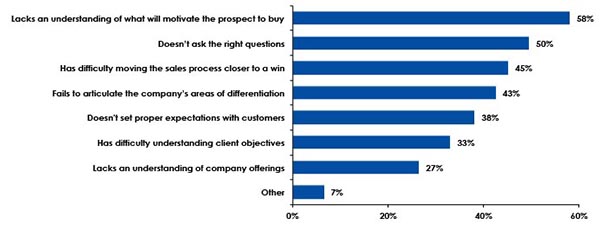
What's Your Plan?
We're already a month-and-a-half or so into the year, and you and your sales team certainly have some sort of goal(s) in place for 2019. The question however, is do you have a plan? Sure, you probably have the end clearly in sight and a few points aimed to get you there, but you can't be sure that you'll reach your end goal if you're not even sure about the details of your platform.
Who Are Your Customers?
You are likely to have a good idea of who your current customers are, just based on your aggregate data. And you may have an idea of who your ideal customers are too. But creating an ideal customer archetype could be a helpful tool for you to reach your goals. If you target every business within a 30 mile radius, you're probably working harder, not smarter. But if you know who your ideal customers are, or at least have a simplified idea about what they as a whole might want or need, you're one step ahead. Keep in mind that time changes, and so do people and businesses. Reevaluating who your target customers are can make sure your company's sales approach stays on the right path.
Will Your Potential Client's Remember Your Message?
Well, most likely not. The brain is hard-wired to remember things that are repeated often and to see patterns. If you only reach out to your customer and prospect base too few times, or spread too long apart, your message will have trouble tapping into this aspect of their memory. Obviously it is important to make your message stand out from the crowd, and I'm not advising you to assault your customers with bland outreaches solely for the purpose of reaching a certain quantity. That said, an average message sent multiple times will probably reach your customer's memory more than an above-average one sent once.
Putting It In Practice
Setting clear goals is only as effective as the path you lay to reach them, so it's important that you and your team are the same page. Making sure you know who you're targeting (and what they need) is the first step. And once you're there, it's just a matter of tailoring your message, and putting it in the right channels.
For more on the details of how to go about the process yourself, see below for a take on the topic by Kate Dunn of Keypoint Intelligence
Define Your Audience
Finding more customers is all about targeting the right prospects, engaging with them, and creating demand for your services. Your company’s success begins with understanding the value you can provide, identifying the specific customers that can benefit the most from this value, and building a process that will help your team engage those prospects efficiently. Creating an ideal customer profile will enable you to define your audience and build a good prospect list. The elements of your ideal customer profile might include:
- Focus markets
- Targeted geographies
- Company size
- Level of decision-makers sought
- Key products and services that can create value for these customers
Companies with a clearly-defined profile will often include additional characteristics to increase their odds of engaging prospective accounts. These elements include the purchasing habits, buying processes, business environment, and company culture of prospective companies that are the best fit for your printing business.
Assess Your Sales Team
Once your audience is defined, your company must turn its attention to the messaging that the sales team is delivering when working to engage prospective buyers. To engage prospects in today’s market, your reps must be able to set a buying vision that is based on an understanding of specific business challenges your prospects are facing. Your reps need to create a clear vision of the potential benefits or return the prospect can realize by engaging with your company. Too many firms simply assume that their reps are delivering powerful insight designed to capture the interest of prospects. According to a research study from Keypoint Intelligence, over half of sales managers believed that their sales reps lacked a thorough understanding of the things that would motivate a prospect to buy.
What are the top mistakes that you’ve seen your sales reps make?

N = 272 Total Respondents
Source: Best Practices of High-Performance Print Sales Organizations, InfoTrends 2016
Develop the Right Cadence
In addition to not saying what buyers want to hear, many sales reps simply give up too quickly. Even when reps do continue to contact prospects, their efforts typically involve reaching out randomly over an extended period of time. The messaging is typically undifferentiated and is often triggered by the addition of a new piece of equipment or a new/improved service offering. The simple message is that prospects don’t hear from sellers often enough to maintain mindshare. Furthermore, prospects will not see a reason to engage when a rep’s messaging is too similar to that of competitors.
For most companies in the printing industry, reps must manage existing accounts while also working to attract new business. Building an efficient cadence that will grab the attention of targeted prospects is critical to sales productivity. Since a rep must contact the prospect multiple times over a compact period of time to be successful, a cadence of eight to 10 touches is ideal. Your reps must use a variety of tactics when reaching out to prospects, including phone calls, voicemails, e-mails, LinkedIn messages, networking, and physical mail. Each message must build off of the insight of the initial contact method by highlighting specific elements, providing ROI examples, and building a case for why engaging with the company now could help the prospect address a key business challenge.
The ideal length of the engagement period will typically be about five to eight weeks with no more than two touches per week and no more than five business days between touches. This barrage of activity means that reps must manage a smaller number of prospects at one time to ensure that they complete the cadence and establish mindshare. Delivering improved messaging over a compact period of time increases the likelihood that the messaging will hit home and give the prospect a compelling reason to engage.
Your reps should always be focusing on a batch of prospects to engage. Prospects that fail to respond to the rep’s tactics should be dropped into the company’s normal marketing tactics for a set period of time, after which they should be re-entered into the more aggressive prospecting cadence. Prospects who do not engage should typically be re-entered after about four to six months, but the ideal timeframe will vary based on the size of the target audience and the sales rep’s bandwidth. When the time comes to begin the sales prospecting cadence again, reps should review the prospect’s current state, then make modifications to their insight and the messaging delivered through the cadence to increase the chances of striking a nerve with the prospect.
The Bottom Line
Improving the efficiency of your sales team and the effectiveness of your prospecting efforts are keys to success in today’s market. Your reps must understand how to target the right prospects with insight that differentiates your company from competitors while using a defined cadence of varied tactics. If you focus on developing your process today, you will set yourself up for future success. Even if you fell short of your 2018 goals, closing out the year by re-assessing your strategies will significantly increase your chances of reaching your revenue goals in 2019!







